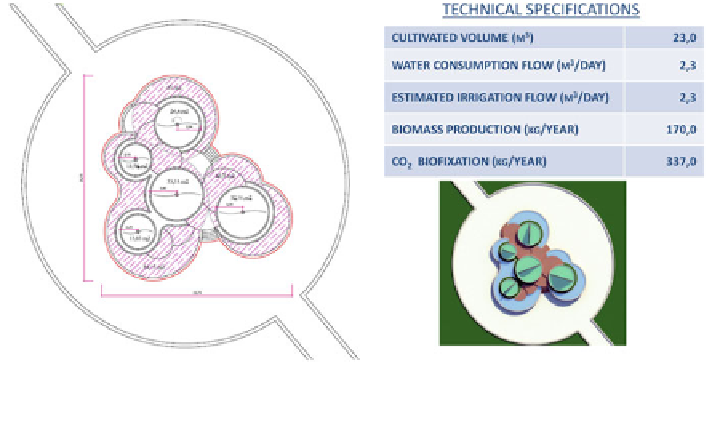Environmental Engineering Reference
In-Depth Information
Fig. 7.15 Horizontal photo-bioreactor for fountains. Calculated technical data (Given by Alga
Energy Company)
7.5 Conclusions
The proposal presented by the authors develops innovative prototypes of photo-
bioreactors, integrated into the surfaces of cities and architecture—facades, roofs
and pavements. Through this we are producing energy up to 10-15 % of a total
energy consumption of a building. Parallely we are capturing CO
2
emissions in the
place where those emissions are produced, being algae the only source of
renewable energy able to fix carbon dioxide. The additional benefits are saving of
land for algae cultivation, reducing urban temperature by self-thermoregulation
and increasing architectural insulations—up to 10 % because of the effect of
water. In this fashion, the architecture itself becomes an energy producing enve-
lope, thus becoming a recycling form of architecture and introducing the nature
into urban landscape.
Acknowledgments We acknowledge the financial support by a competitive pre-industrial
research program given by CDTI (Centro para el Desarrollo Tecnológico Industrial) and the
Government of Spain, Economic and Competitiveness Ministry. It has also been funded by
Cervera and Pioz Architects S.L.P. We also acknowledge the cooperation from the University of
Alcala (UAH).
References
Yoo JJ et al (2013) Development of thin-film photo-biorreactor and its application to out door
culture of microalgae. doi:
10.1007/s00449-0130898-2

Search WWH ::

Custom Search